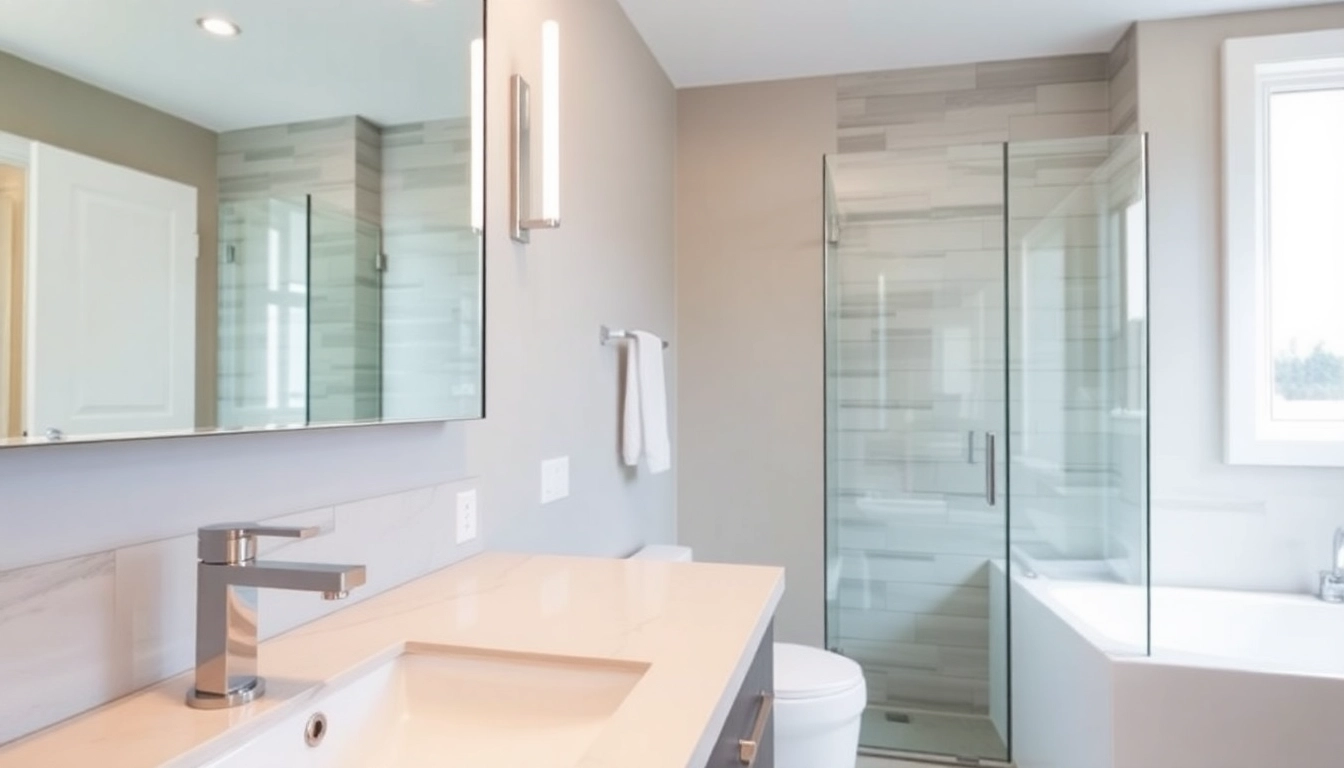Understanding the Role of a Carpenter
What Does a Carpenter Do?
A Carpenter is a skilled tradesperson who specializes in constructing, repairing, and installing building frameworks and structures primarily made from wood, but also utilizing other materials such as metals and composite products. Carpenters are integral to the construction industry, serving as artisans responsible for transforming architectural designs into tangible structures. Their work involves precise measurement, cutting, shaping, and assembling various materials to create everything from residential homes and commercial buildings to custom cabinetry, furniture, and decorative features.
Beyond the physical aspect, carpenters also play a critical role in interpreting blueprints, adhering to safety standards, and ensuring that projects meet stringent quality and durability criteria. Their expertise extends across a spectrum of tasks—including framing, finishing, siding, and installing fixtures—making them adaptable professionals capable of handling diverse projects that demand both technical skill and craftsmanship.
Types of Carpenters and Specializations
Carpentry is a broad trade with several specialized roles, each focusing on different aspects of construction and finishing work. Understanding these distinctions is essential for both clients seeking services and aspiring carpenters exploring career paths.
- Rough Carpenters: They focus on the structural framework of buildings, including wall framing, floor joists, roof trusses, and concrete forms. Their work provides the skeleton that supports the entire structure and requires precise measurement and adherence to architectural plans.
- Finish Carpenters: They handle the detailed, aesthetic aspects of construction, such as installing trim, molding, cabinetry, and other decorative elements. Finish carpenters ensure that the final appearance of a project meets both functional and aesthetic standards.
- Residential Carpenters: Specializing in home construction and remodeling, these carpenters work on everything from framing new houses to installing cabinetry, doors, and flooring in private residences.
- Commercial Carpenters: They focus on large-scale projects such as office buildings, shopping centers, and warehouses, often requiring coordination with other construction trades and adherence to strict regulatory specifications.
- Industrial Carpenters: Their work involves constructing large industrial structures, including factories, plants, and bridges, often requiring working with heavy materials and complex frameworks.
- Specialized Roles: Other niches include siding installers, cabinetry makers, and roofing specialists, each demanding specific skills and knowledge tailored to their craft.
Key Skills and Qualifications
The profession of a carpenter demands a combination of technical skill, physical dexterity, and problem-solving ability. Core skills include precise measurement, mathematical aptitude, and the ability to read and interpret complex blueprints or technical drawings. Mastery of tools—ranging from hammers and saws to power drills and CNC machines—is essential.
Formal education typically involves vocational training or apprenticeships, which combine classroom instruction with on-the-job experience. Certification and licensing requirements vary by state, but many successful carpenters pursue certifications such as OSHA safety certifications, specialized trade credentials, and industry memberships that enhance credibility and job prospects.
Soft skills are equally important, encompassing time management, communication, teamwork, and adaptability. A good carpenter must efficiently collaborate with architects, engineers, and clients while maintaining high standards of safety and quality throughout the project.
Choosing the Right Carpenter for Your Project
How to Find a Reliable Carpenter Near You
Finding a dependable and skilled carpenter begins with research. Start by seeking recommendations from friends, family, or neighbors who recently completed similar projects. Online platforms such as Angie’s List, Houzz, and local trade directories can also provide reviews and ratings to evaluate potential candidates. It’s advisable to verify credentials, licenses, and insurance to ensure legal compliance and protection against liabilities.
Visiting previous job sites or requesting references allows you to assess craftsmanship and professionalism firsthand. Additionally, engaging with local carpentry unions or trade associations can connect you with vetted professionals committed to high standards.
Questions to Ask Before Hiring
To ensure your project’s success, prepare a set of pertinent questions when interviewing prospective carpenters:
- What is your level of experience with projects similar to mine?
- Can you provide references from past clients?
- Are you licensed and insured? Can you provide proof?
- What is your estimated timeline and cost for this project?
- How do you handle unforeseen issues or changes during the project?
- Can you provide a detailed written estimate and work contract?
Asking these questions helps clarify expectations, assess professionalism, and establish a transparent working relationship.
Factors Affecting Cost and Pricing
The cost of hiring a carpenter varies primarily based on the project’s scope, complexity, location, and the experience level of the professional. Generally, carpenters charge an hourly rate ranging from $40 to $200, with most falling between $75 and $125 per hour. Larger or more complex projects may necessitate flat-rate pricing or cost-plus arrangements.
Material costs significantly influence overall expenses; high-quality, specialty, or imported materials will increase costs. Additionally, the geographic location affects labor rates—urban areas and regions with a high cost of living tend to have higher prices.
To control costs, it’s advisable to obtain multiple bids, clearly define project deliverables, and consider value over lowest price—quality craftsmanship often results in better longevity and fewer repairs.
Planning Your Carpentry Projects
Designing and Drafting Plans
Successful carpentry projects start with thorough planning and accurate design. Whether remodeling or building from scratch, detailed blueprints and CAD models help visualize the final outcome and identify potential issues early. Collaborate with architects or designers to tailor plans that optimize space, functionality, and aesthetic appeal.
Involving experienced carpenters during the design phase ensures practicality, ease of construction, and cost-efficiency. Precise measurements, material specifications, and project milestones should be documented diligently to guide the construction process.
Materials and Tools Selection
Choosing the right materials is crucial for durability, appearance, and cost. Wood types vary from softwoods like pine for framing to hardwoods like oak or maple for cabinetry. Modern composite materials and eco-friendly alternatives are increasingly popular.
Tool selection depends on the project’s complexity. Essential tools include measuring tapes, squares, saws, drills, and levels. Advanced tools such as CNC routers and laser guides improve precision and efficiency. Proper maintenance and safety checks ensure optimal performance and safety during construction.
Timeline and Project Management
Developing a realistic timeline involves breaking down the project into phases: planning, material procurement, construction, finishing, and cleanup. Coordinating with suppliers and subcontractors prevents delays. Using project management software or traditional Gantt charts can help track progress, allocate resources, and adjust schedules proactively.
Clear communication with your team and setting expectations about milestones reduces misunderstandings and keeps the project on schedule. Regular site visits and updates facilitate quality control and swift resolution of issues.
Best Practices in Carpentry
Safety Standards and Techniques
Safety is paramount in carpentry. Adhering to OSHA guidelines and using personal protective equipment (PPE)—such as gloves, goggles, ear protection, and masks—is essential. Proper training in tool handling, fall protection, and material safety minimizes accidents.
Maintaining a clean workspace helps prevent trips and falls. Regularly inspecting tools for defects and ensuring correct usage prevents injuries and equipment failures. Implementing safety protocols and fostering a safety-first culture are fundamental for protecting workers and clients alike.
Quality Assurance and Finishing
High-quality craftsmanship involves meticulous attention to detail and adherence to standards. Regular inspections during construction catch defects early, allowing corrections before finishing.
Finishing touches such as sanding, sealing, and applying protective coatings enhance appearance and longevity. Precise fitting, smooth surfaces, and flawless paint or stain application are hallmarks of professional quality work. Proper curing and drying times should be respected to achieve the best results.
Integrating Modern Technologies
Incorporating digital tools and automation enhances productivity and precision. Computer-Aided Design (CAD) software streamlines planning, while CNC machining offers high accuracy for complex cuts and custom components.
Additionally, emerging technologies like augmented reality (AR) assist in visualization, and laser measurement tools improve accuracy. Embracing innovation enables carpenters to deliver cutting-edge results efficiently, elevating their competitive edge in a dynamic industry.
Measuring Success and Maintaining Your Carpentry Work
Performance Metrics and Evaluation
Evaluating carpentry projects involves assessing structural integrity, aesthetic quality, and adherence to timelines and budgets. Client satisfaction surveys and post-project inspections reveal areas for improvement. Tracking metrics such as defect rates, rework frequency, and safety incidents helps refine processes.
Continual professional development, including skill upgrades and certifications, increases craftsmanship standards and market competitiveness.
Maintenance Tips for Longevity
Well-maintained carpentry work prolongs its lifespan and preserves aesthetics. Regular cleaning, especially of wood surfaces, prevents mold and decay. Applying protective sealants or stains periodically maintains finish and resistance to environmental damage.
Addressing minor repairs promptly—such as fixing loose joints, replacing damaged trims, or refinishing worn surfaces—prevents costly future repairs and preserves structural integrity.
Upgrading and Remodeling Advice
Modernizing existing structures involves strategic upgrades like installing energy-efficient windows, replacing outdated fixtures, or adding smart home integrations. Remodeling projects should begin with thorough assessments and clear objectives.
Consult experienced carpenters to explore custom solutions that fit your aesthetic and functional needs. Attention to detail during upgrades ensures seamless integration, improved usability, and enhanced property value.




